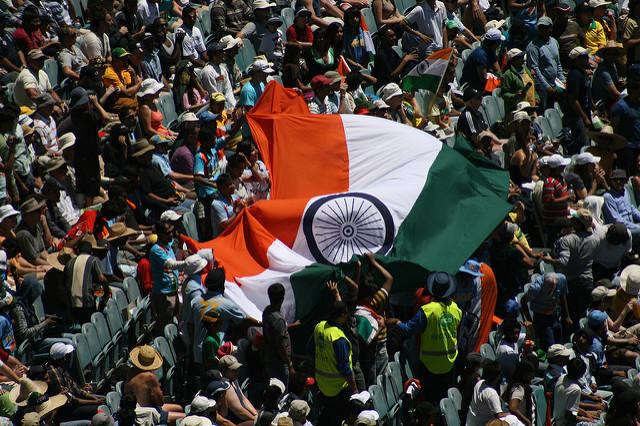The 1996–1997 cabinet papers: hopes and hazards for Australia and India (part 1)
Posted By Graeme Dobell on January 17, 2019 @ 06:00

When the Australian polity talks about relations with India, there’s always a wistful bit about the great possibilities and how little has been achieved.
The sense of regret requires ignoring a lot of history. It’s not that India and Australia don’t see each other. It’s how they see and what they want that differ so much.
Many policy strains define the wistful refrains. Differences have outweighed the possibilities. Elephant and kangaroo are a mismatched pair.
Here’s a fine example of the perennial puzzlements from former prime minister Kevin Rudd’s 2018 memoir [1]: ‘The entire history of the Australia–India relationship had been one of unfulfilled expectations.’
Skipping back a couple of decades, here’s another bit on the Oz–India puzzles and pitfalls, from 1996: ‘In the past, Australia-India relations have been sporadic and insubstantial.’
That judgement is contained in a cabinet submission to the Howard government in October 1996 by the foreign minister, Alexander Downer, and the trade minister, Tim Fischer. How Australia saw India, via the Department of Foreign Affairs and Trade, is here [2] among the 1996 and 1997 cabinet records just released by the National Archives of Australia.
In its first year in office, the Howard government was peering into the future and casting around for new stuff to do. And like so many before it, it ‘discovered’ India.
Every Australian leader since Gough Whitlam has ‘discovered’ India, as Meg Gurry [3] records in wonderful detail in her history of the relationship. And that journey of discovery has often been one of disappointment and frustration.
The 1996 submission is a fine example of the discovery genre, giving an implicit guide to the usual strains.
As an example of the ‘how they see’ issue, here’s the DFAT version of what India would see as its history of independence and non-alignment: ‘For over forty years India isolated itself through autarky and its close economic and strategic relationship with the former USSR. With its closed, highly-regulated and low-growth economy, India fell further and further behind its East Asian partners throughout the 1960s, 70s and 80s.’
And India’s view of Australia as an American stooge? DFAT preferred the slightly less insulting word ‘proxy’ in the discussion of strategic interests:
India is the only country in the South Asia sub-region with a medium to long term capacity to affect our security and economic interests. Clearly, India has an importance for us that its South Asian neighbours do not, and our de-linking of India from Pakistan (and others in region) in government considerations reflects this reality. In the past, Australia-India relations have been sporadic and insubstantial. Today, the relationship offers greater potential benefits and with the exception of our differences over nuclear proliferation and the CTBT [Comprehensive Nuclear-Test-Ban Treaty] issue, there are no significant negatives—an assessment we consider is shared by the Indians—although the image of Australia as a United States proxy is still widely held in Indian official circles.
India had ‘pretensions to global power status’, while still believing its size and importance were insufficiently acknowledged: ‘Strategically, India feels threatened by China and sees itself as a potential counterweight to China—an ambition, however, that must remain a long-term one requiring a much greater allocation of resources for defence than the country can currently afford.’
The submission noted that India ‘felt keenly’ its non-membership of key Asia–Pacific regional institutions, having just joined the ASEAN Regional Forum (ARF), but been snubbed by APEC:
Not all India’s prospective East Asian partners are fully comfortable with its claims to membership of the region. India’s uncertain nuclear intentions and its vexed relations with Pakistan are a cause of concern. Its assertive and sometimes difficult behaviour in international bodies is often resented. The ARF countries are wary of importing South Asian conflicts that might erode its focus on key Asia Pacific security issues. Also, India’s limited understanding of the dynamics of the Asia Pacific and its conservatism on many multilateral economic issues do not sit easily with APEC’s goals. The process of liberalisation of India’s economy has a long way yet to go to meet the expectations of its Asia Pacific partners.
Having set the scene, Downer and Fischer’s cabinet submission then grappled with India’s demand to join APEC. The ensuing battle between DFAT and the prime minister’s department over India and APEC tells much about the disappointment side of the discovery ledger. Tune in to the next column for all that and more.
Article printed from The Strategist: https://aspistrategist.ru
URL to article: /the-1996-1997-cabinet-papers-hopes-and-hazards-for-australia-and-india-part-1/
URLs in this post:
[1] 2018 memoir: https://www.panmacmillan.com.au/9781760556686/
[2] here: http://www.naa.gov.au/collection/explore/cabinet/by-year/1996-1997/selected-records.aspx#section12
[3] Meg Gurry: https://www.mup.com.au/books/australia-and-india-mapping-the-journey-electronic-book-text
Click here to print.